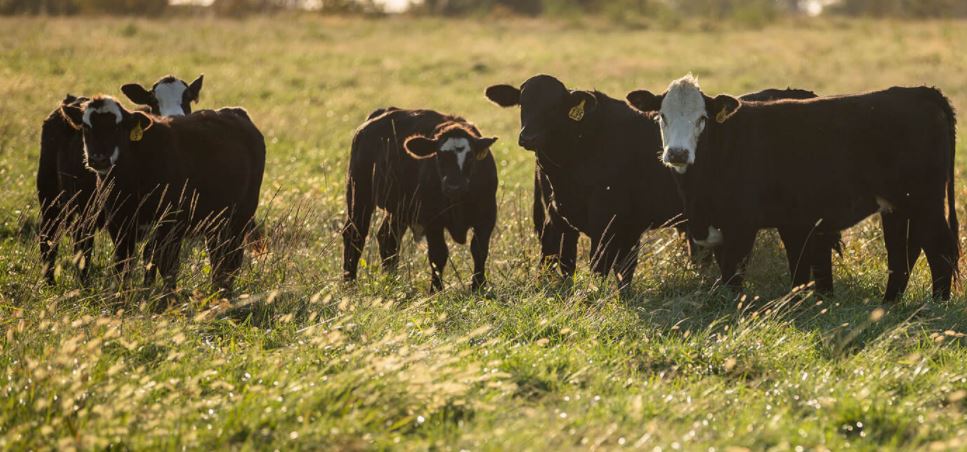
Weekly, Oklahoma State University Extension Beef Cattle Nutrition Specialist Paul Beck offers his expertise on the beef cattle industry. This is a part of the weekly series known as the “Cow-Calf Corner.” Today, he talks about forage intake and cow efficiency.
Growth rates and carcass weights have been increasing over the last 30 years. However, little research has been conducted to determine how aggressive selection for production traits affects beef cow maintenance requirements. It is thought that cows with greater genetic capacity for growth, milk and mature weight have greater maintenance energy requirements. To measure this Amanda Holder, a graduate student at the OSU Range Cow Research Center examined the effects of diet type on greenhouse gas emissions and dry matter intake estimation. They used 42 Angus cows with a wide range in DMI EPD (-1.36 to 2.29) and were fed either grass hay only or a mixed diet of 35% hay and 65% concentrate feeds. They found that intake of the mixed ration and the long-stem hay were correlated, but cow weight gain while consuming hay was not correlated with cow weight gain while consuming the concentrate-based diet. As intake of both diets increased, both CO2 and methane production increased. Daily greenhouse gas emissions increased with increasing feed intake and were lower when cows consumed hay compared to emissions during the period cows consumed the mixed diet.
A study by OSU graduate student Emma Briggs investigated hay voluntary intake and its relationship to both recovered energy (cow weight gain and milk production) and maintenance energy requirements during the dry period in Angus cows. Twenty-four mature fall-calving Angus cows were individually fed in amounts to ensure minimal weight and body condition change. Recovered energy was calculated as the total of maternal tissue energy change (weight gain or loss) plus milk recovered energy (milk yield plus milk composition). From this information, maintenance energy requirements were calculated for each cow. After calves were weaned, a voluntary feed intake study was conducted to determine the influence of total recovered energy during lactation and lactation maintenance energy requirement on voluntary intake of a low-quality grass hay diet. The energy required for maintenance declined as net energy recovery increased, but there was no relationship between the amount of daily milk energy produced to post-weaning voluntary forage intake. However, increasing weight loss during lactation was associated with greater post-weaning feed intake. In contrast to previous work, these results suggest that cows within a breed that are better able to maintain their body condition and produce more milk energy at the same time have lower maintenance energy requirement.
Around 74% of the maintenance energy required to produce beef is used by the beef cowherd and consequently about 70% of the greenhouse gas emissions generated by beef production are from the cowherd. Cow efficiency and greenhouse gas emissions are important to consumers and government regulators; thus, they are important for our industry.
Below, Dr. David Lalman discusses these feed efficiency studies on SunUpTV from November 1, 2021:















